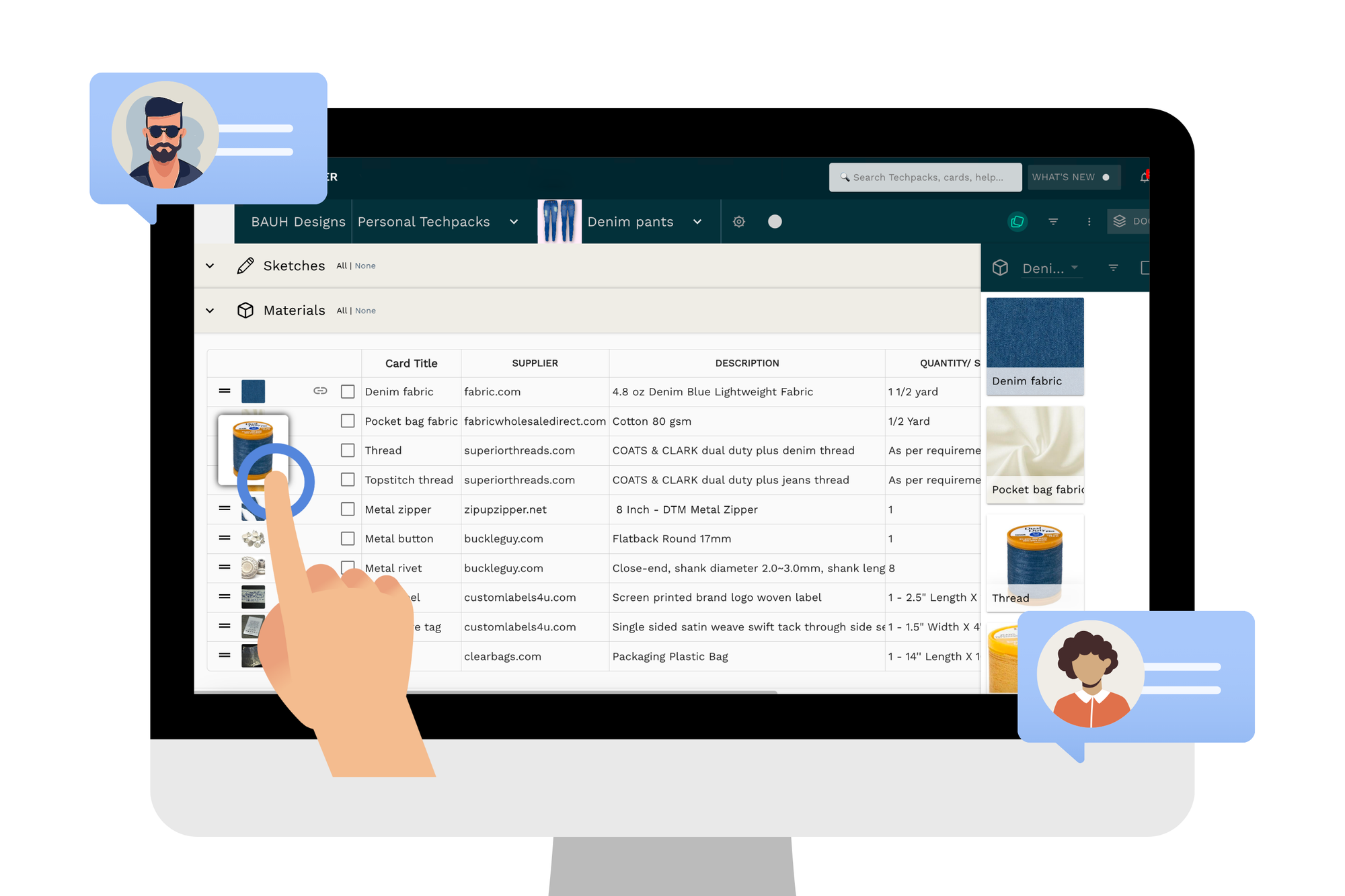Contents
In the fashion industry, efficiency and collaboration are crucial. Traditional tech packs, typically static PDFs, no longer meet the demands of modern fashion brands. These static documents are prone to version control issues, lack accessibility for global teams, and hinder rapid, cohesive collaboration across departments.
Today, the industry needs agile, interactive tech packs—dynamic, online platforms that allow real-time updates, centralized data, and seamless communication. This shift is essential for staying competitive and efficient in the evolving fashion landscape.
Why Traditional Tech Packs Don't Work Anymore
A traditional tech pack—a detailed document outlining the design specifications of a garment—has long been the cornerstone of the production process. However, as technology advances and consumer demands shift, the limitations of these conventional tech packs have become increasingly apparent. From inefficiencies in communication to the inability to adapt swiftly to design changes, traditional tech packs are no longer sufficient to meet the needs of today's dynamic fashion industry.
Static Nature of Tech Packs
Traditional tech packs are often static documents, typically in PDF format. They don't allow for real-time updates, which is crucial in today's fast-paced environment. When changes are made to designs or specifications, updating and exchanging these static documents can be time-consuming and prone to errors.
Every design team knows that their journey only begins after the first version of the tech pack is submitted to the factory. Multiple iterations occur during the sample-making process. On average, it takes at least 3-5 sample rounds until the final sample is approved. This means many parts of the tech pack can change during the process, including points of measurement, gradings, bill of materials, and cost.
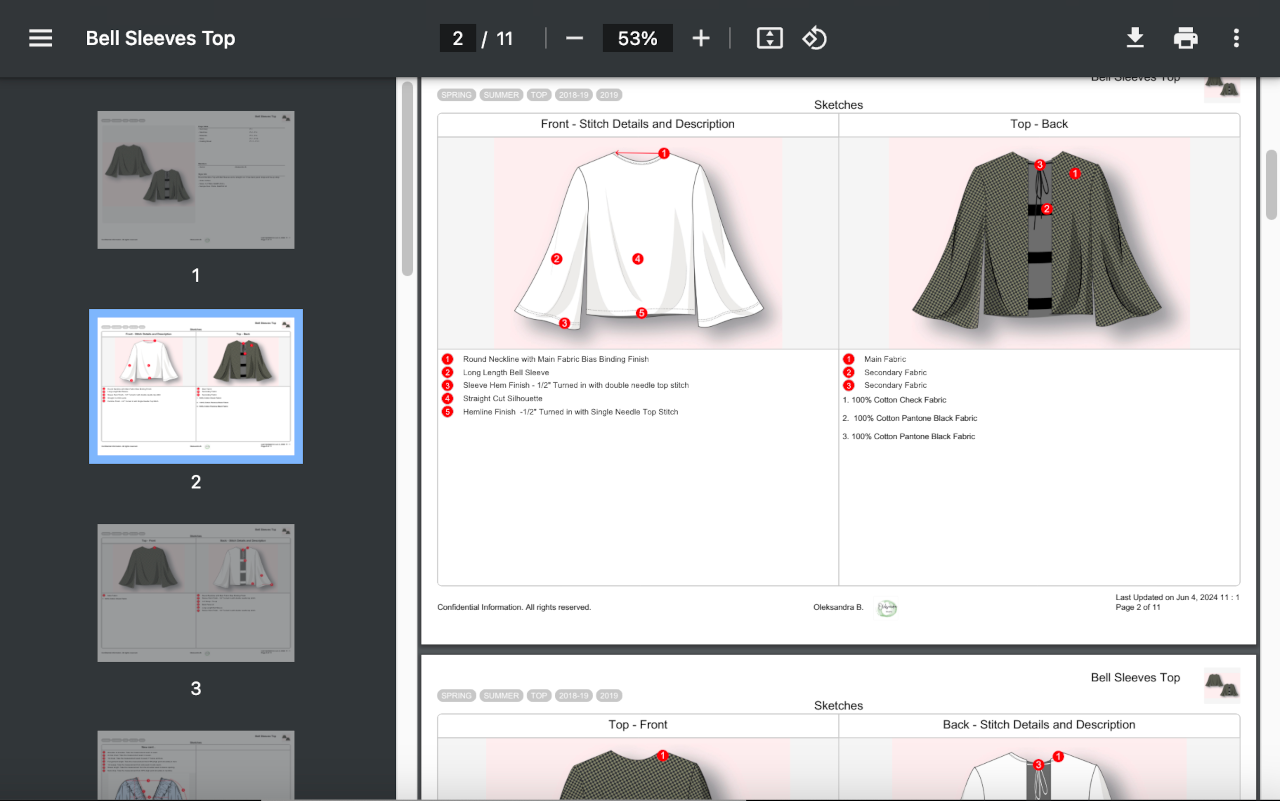
Having a PDF tech pack that goes back and forth between designer and manufacturer can quickly become a nightmare. Updates and comments can get lost in emails, formatting a new PDF and keeping track of versions takes too long, and keeping all design details disconnected is simply not efficient.
Lack of Accessibility
With teams spread across different locations and time zones, having a single, easily accessible tech pack is vital.
For example, accountants need access to build Costing Sheets to calculate the cost of a garment. Sourcing specialists need access to a product development workspace to create BOM tables. Fashion designers need to transfer sketches from Adobe Illustrator to the workspace to add points of measurement and annotations. Technical designers need fast grading tools to create Measurement Tables for a variety of sizes.
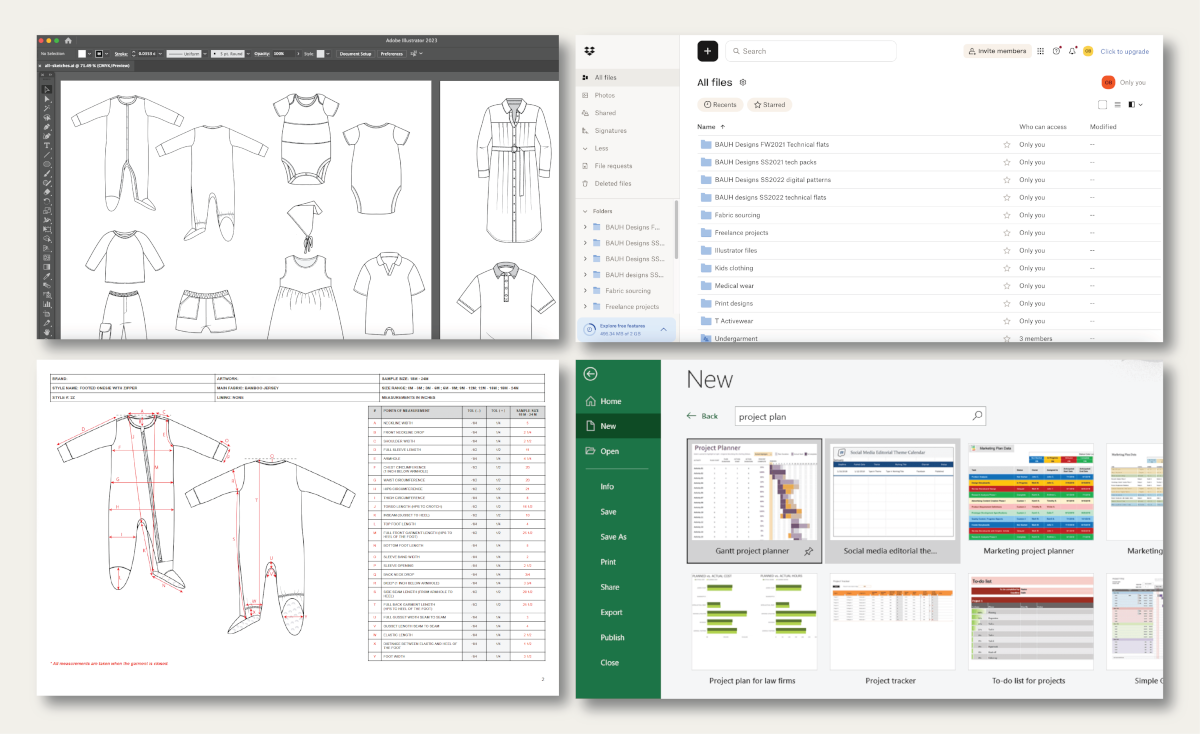
Traditional tech packs often reside on individual computers or are shared via email, leading to version control issues and accessibility problems.
Incohesive Data
Fashion design involves multiple departments, like design, sourcing, and production teams. Tech packs that are not cohesive and integrated across all these departments can lead to miscommunication and delays. The data needs to be centralized and consistent to ensure everyone is on the same page.
All departments responsible for product development need to be aware of the latest version of the tech pack, including updated sketches, fabric information, and fit notes. Having multiple versions of tech packs spread across various folders and emails leads to inefficiency and miscommunication. This fragmentation can result in errors, wasted time, and additional costs.
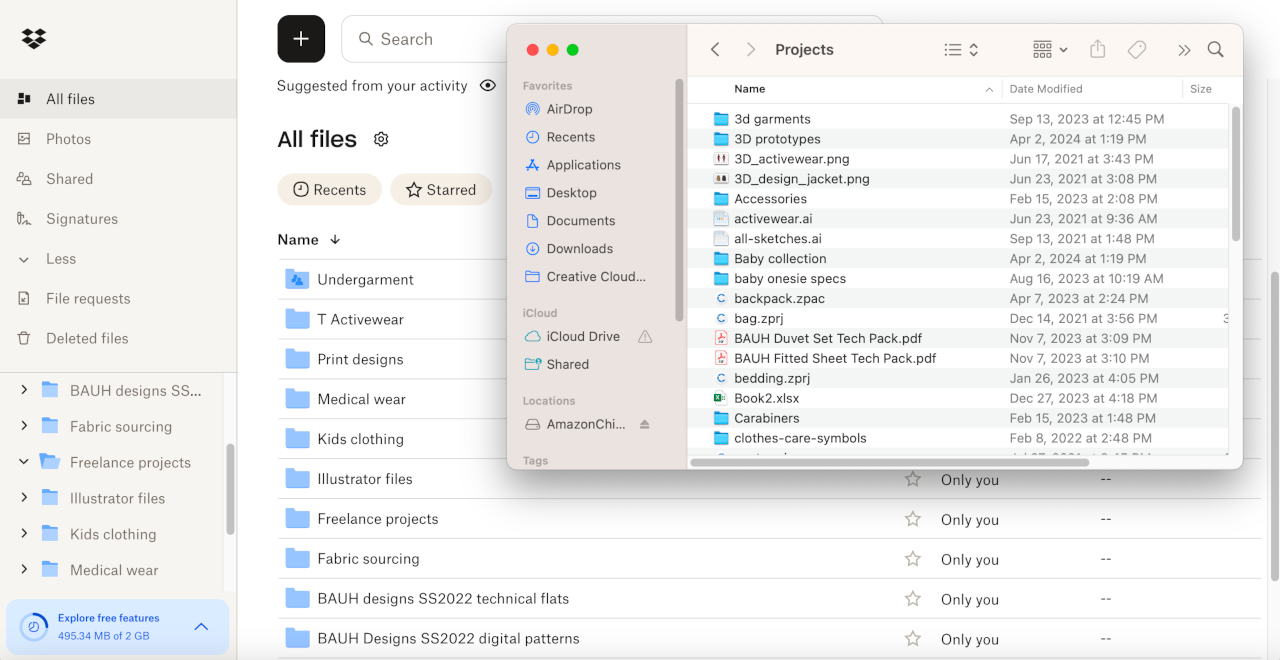
A centralized, instantly updated, accessible system for managing tech packs is essential to maintain consistency, streamline workflows, and enhance collaboration among all team members.
Inefficient Collaboration
The industry's shift towards agile and iterative processes demands rapid, collaborative iterations that traditional tech packs cannot support. These static documents hinder quick feedback loops and necessary changes, causing delays and inefficiencies. Product developers need a robust development system that enables seamless communication across departments while working on separate tasks.
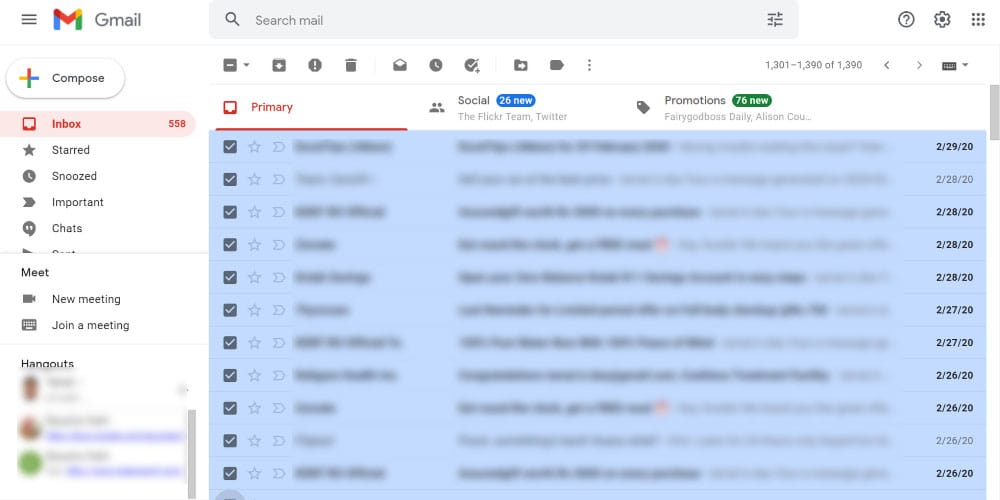
Modern fashion brands require a system that promotes agility, allowing quick pivots in response to trends, and supports real-time communication for effective collaboration among design, production, marketing, and sales teams. Rapid feedback loops are essential for maintaining momentum and ensuring product quality, while flexibility is key to adapting to new information or changes. Additionally, collaboration tools like real-time document editing and shared virtual workspaces enhance team coordination and project visibility.
The Need for Agile, Interactive Tech Packs
To address these challenges, the fashion industry needs to move towards more dynamic, interactive solutions for tech packs. Modern tech packs should be accessible online, allowing for real-time updates and collaboration.
Single-Page, Real-Time Collaboration
Overall, by leveraging single-page, real-time collaboration tools, fashion brands can streamline their product development processes, enhance team collaboration, and ensure that their products are always aligned with the latest market trends and demands.
The interactive nature of these modern tech packs also supports a more dynamic and flexible approach to product development. Designers can easily update design specifications, materials can be swapped out quickly, and production guidelines can be adjusted on the fly. This flexibility is crucial in the fast-paced fashion industry, where trends and consumer preferences can change rapidly.
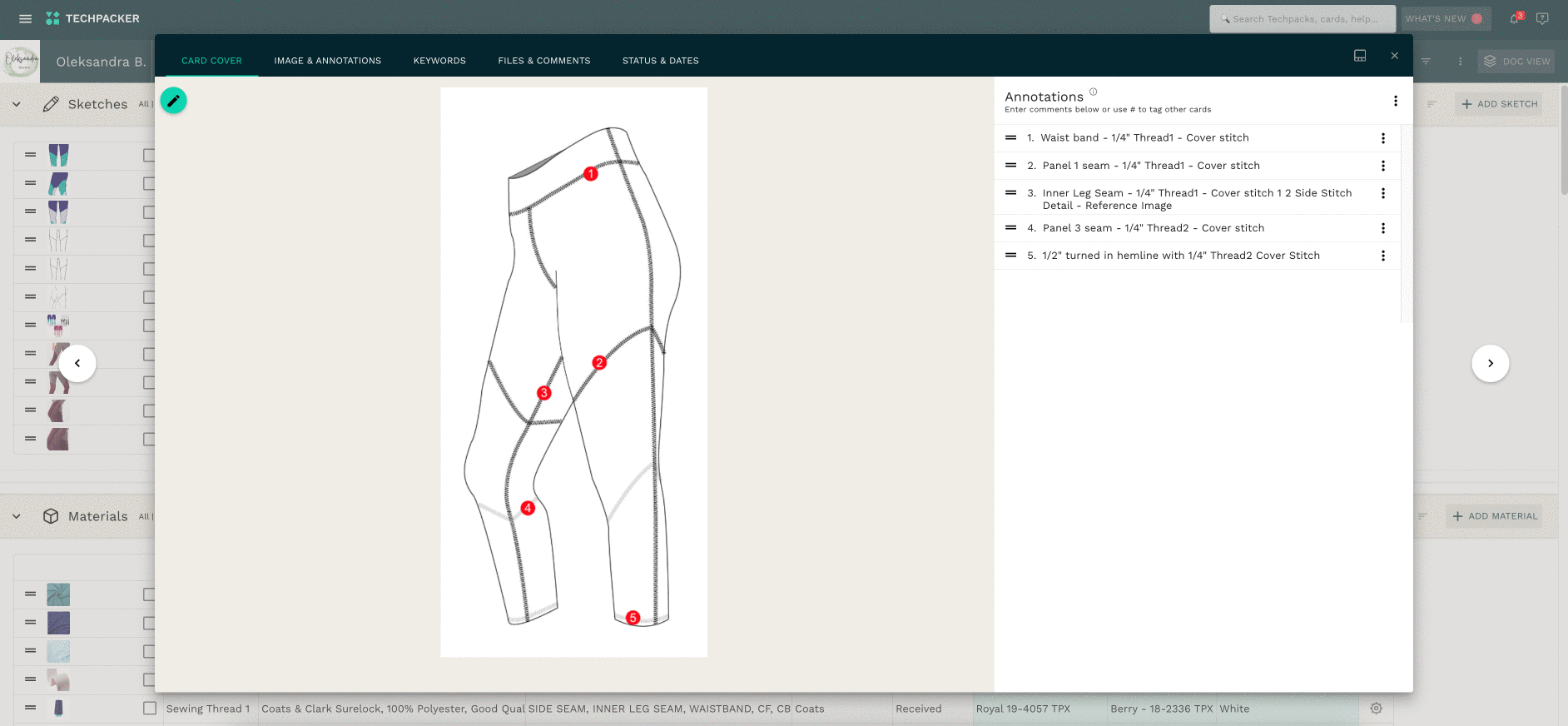
Furthermore, the ability to comment directly on the document facilitates immediate feedback and discussion. Team members can highlight specific sections, suggest modifications, and address potential issues directly within the tech pack. This integrated feedback loop accelerates decision-making and problem-solving, allowing for more agile and responsive development processes.
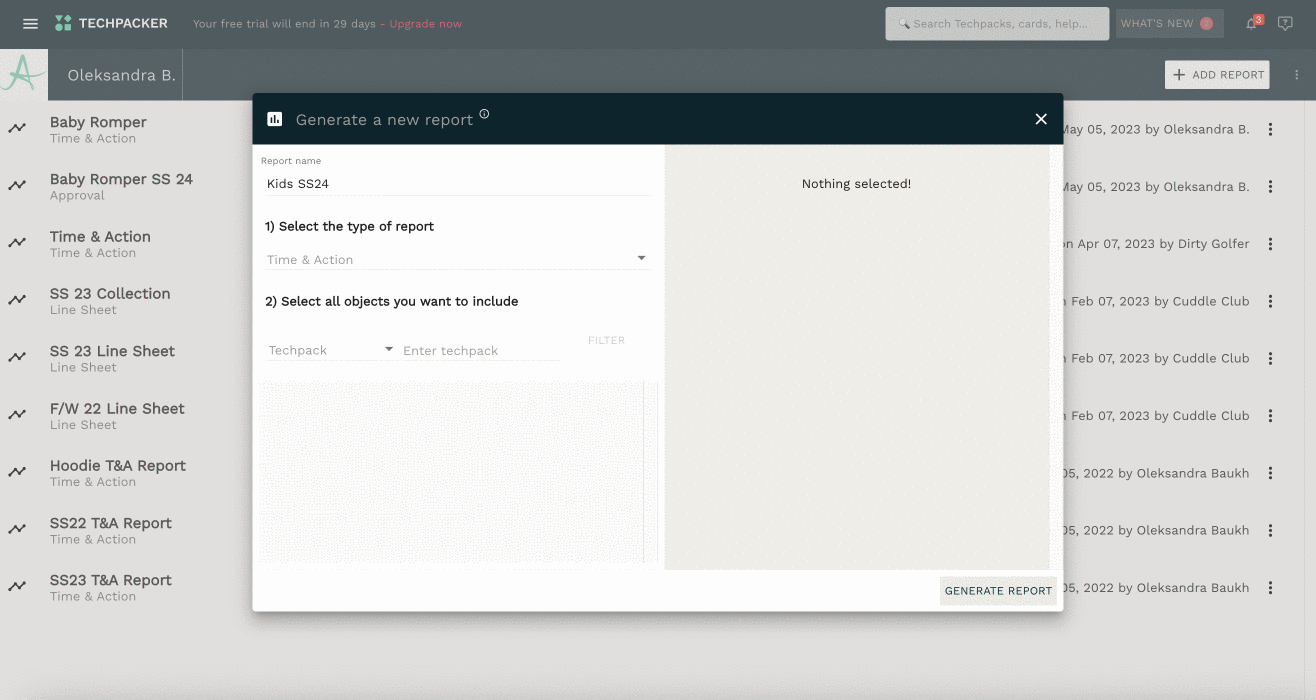
In traditional tech packs, changes, and updates often lead to version control issues and communication gaps, causing delays and errors. However, with a web-based collaborative platform, these issues are mitigated. Every edit is reflected in real-time, so designers, product developers, manufacturers, and other stakeholders can see changes as they happen. This instant visibility ensures that everyone is aligned, reducing the risk of miscommunication and fostering a more integrated workflow.
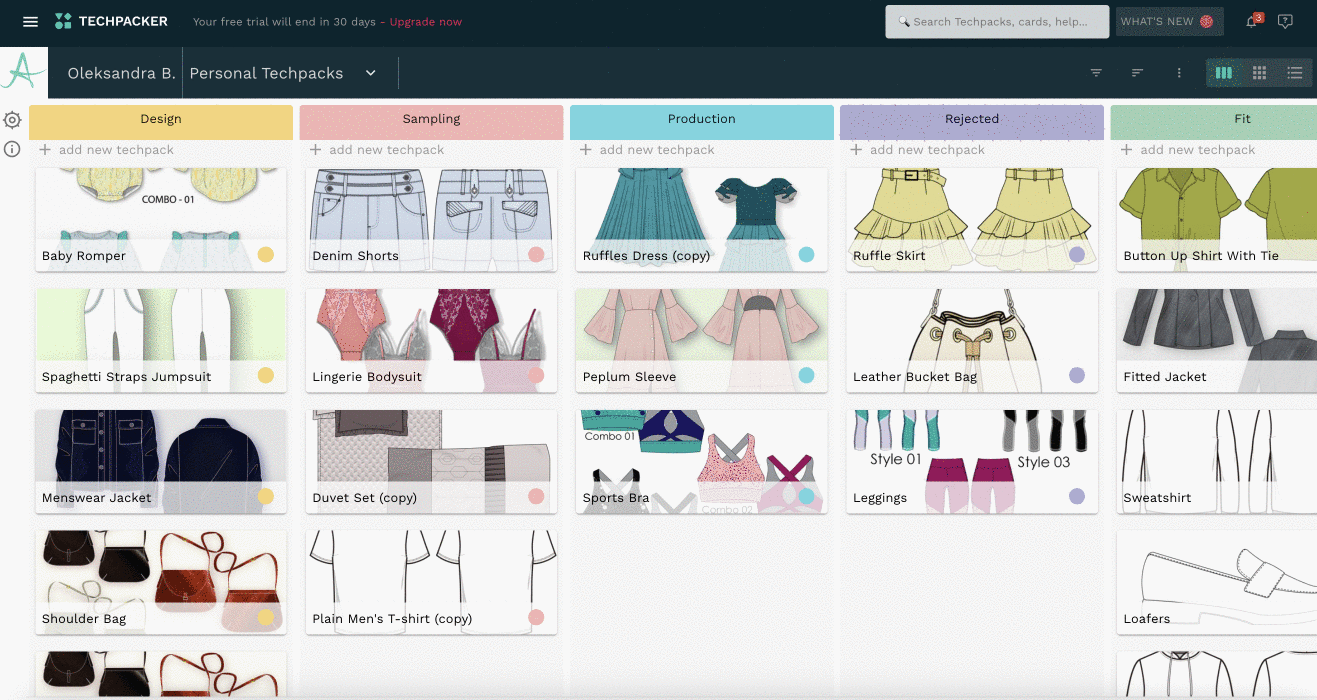
Modern tech packs can be transformed into interactive, web-based documents that revolutionize the way fashion product development teams work. These single-page, real-time collaborative platforms allow multiple users to view, edit, and comment on the same document simultaneously. This ensures that all team members are consistently working with the most up-to-date information, significantly enhancing efficiency and cohesion.
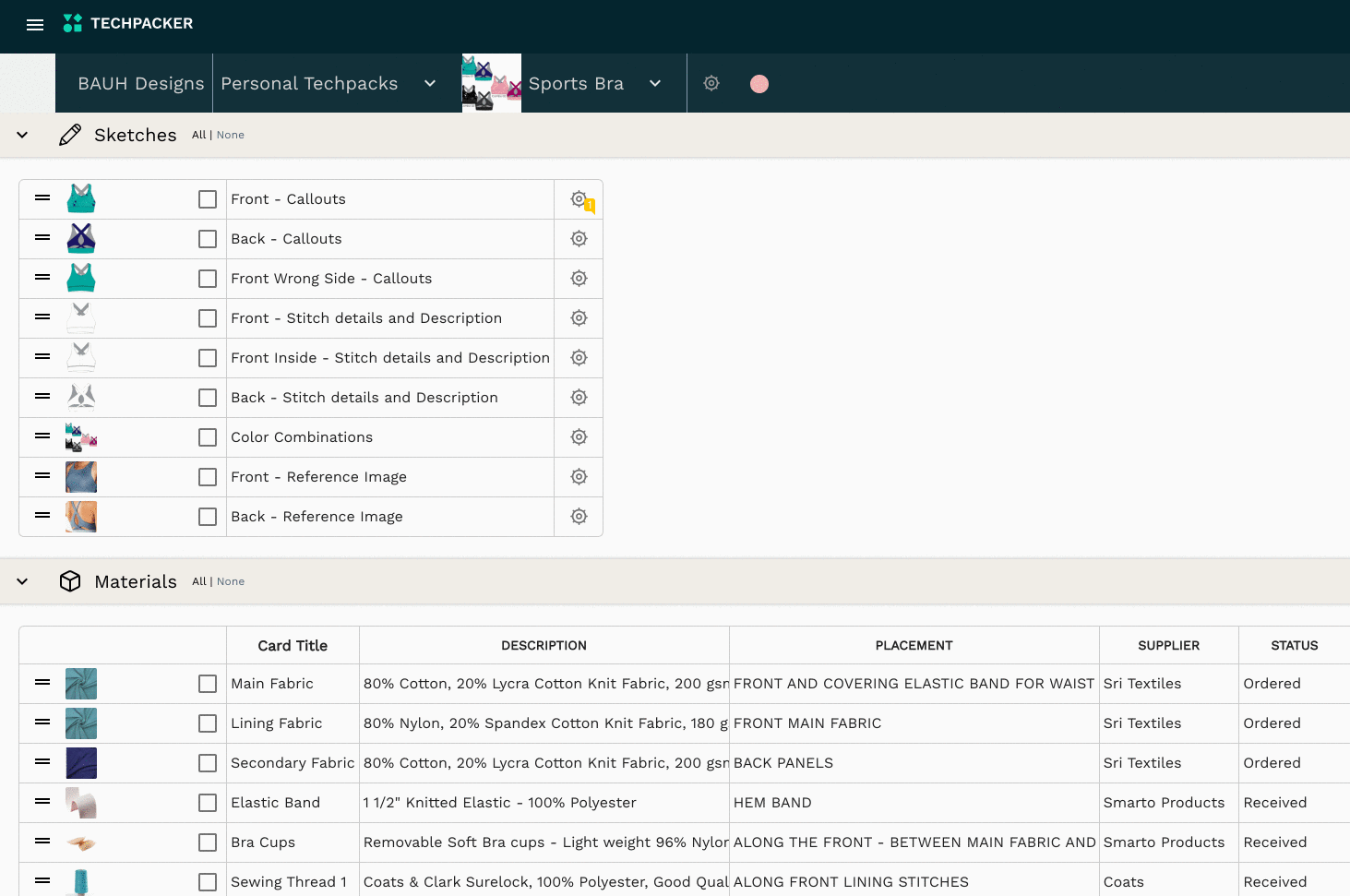
Centralized Data Hub
This hub facilitates better collaboration, as all relevant details are stored and updated in one place. Version history and access control features further enhance security and traceability. Overall, a centralized data hub improves accuracy, speeds up decision-making, and allows for a more agile response to market demands, supporting the creation of high-quality fashion products.
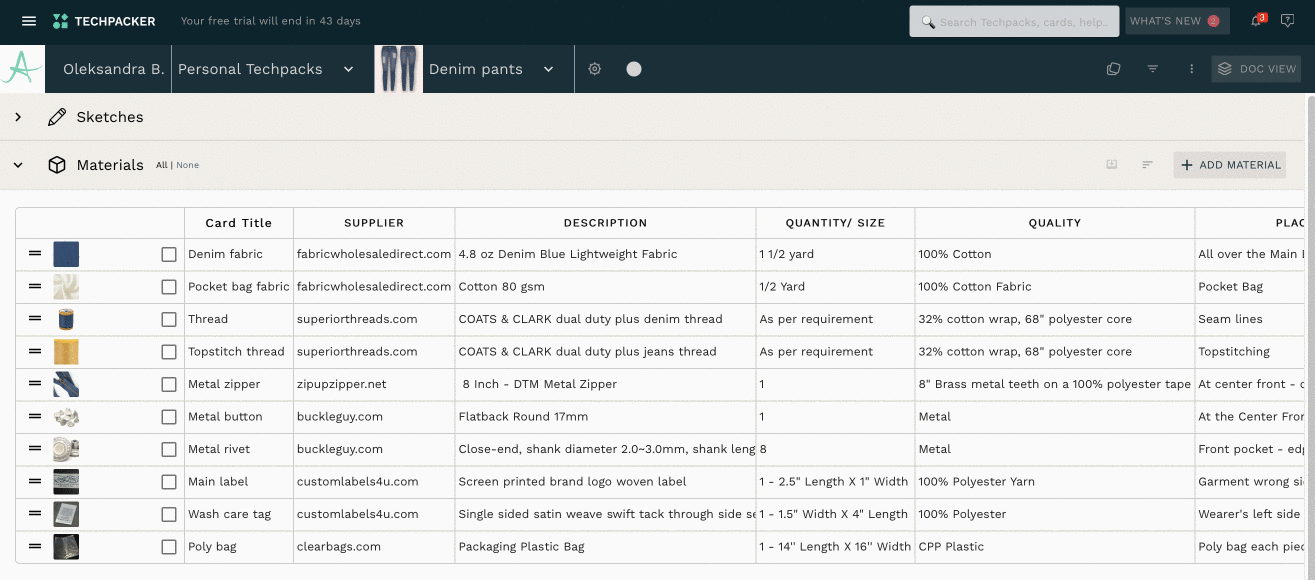
Traditional tech packs often suffer from version control issues and quickly become outdated. A centralized online platform maintains a single source of truth, ensuring everyone works with the latest data. Design updates, material changes, and production guidelines are reflected in real time, allowing teams to adjust plans instantly.
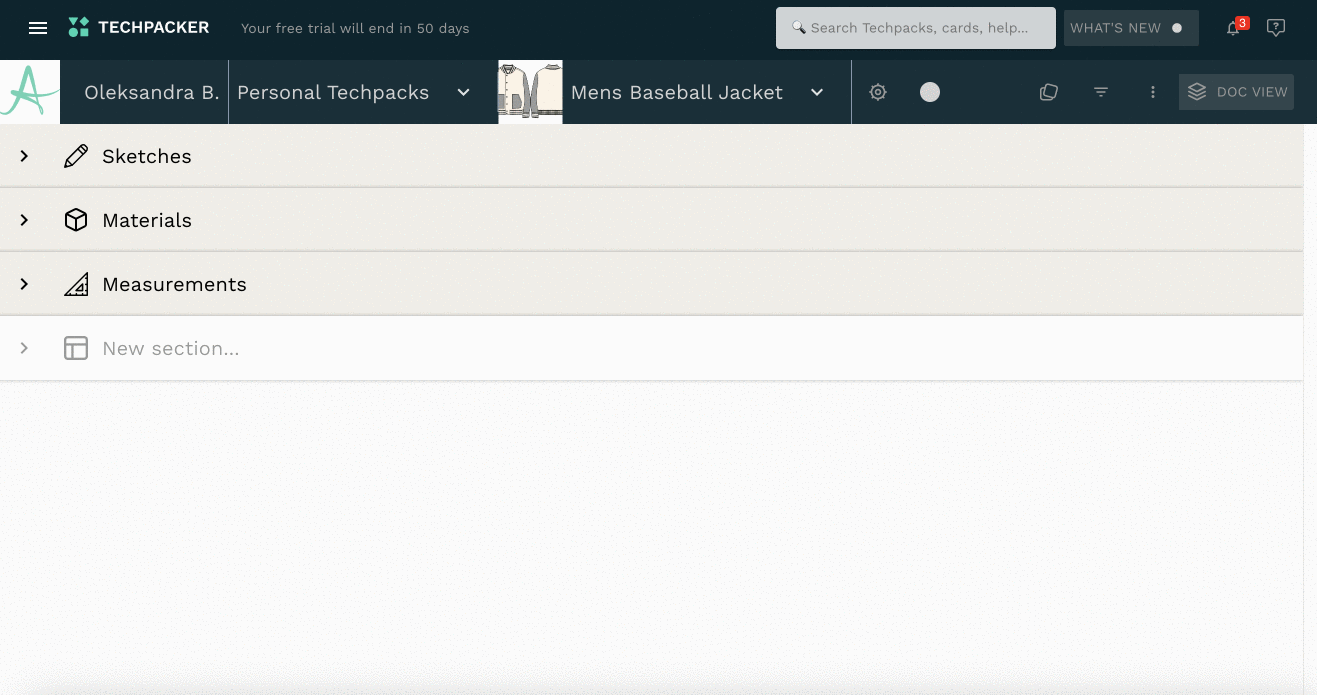
Instead of static PDFs, an online platform can serve as a centralized hub for all tech pack data, transforming how information is accessed and shared across departments. This ensures that design, production, sourcing, and other teams have access to cohesive and up-to-date information at all times, enhancing efficiency and coordination.
Instant Communication and Feedback
In the fast-paced fashion industry, the ability to make on-the-fly adjustments is crucial. Instant communication tools help teams quickly adapt to new information or market changes, maintaining competitiveness and delivering products that meet consumer expectations. Overall, these tools lead to faster decisions, better collaboration, and more efficient workflows.
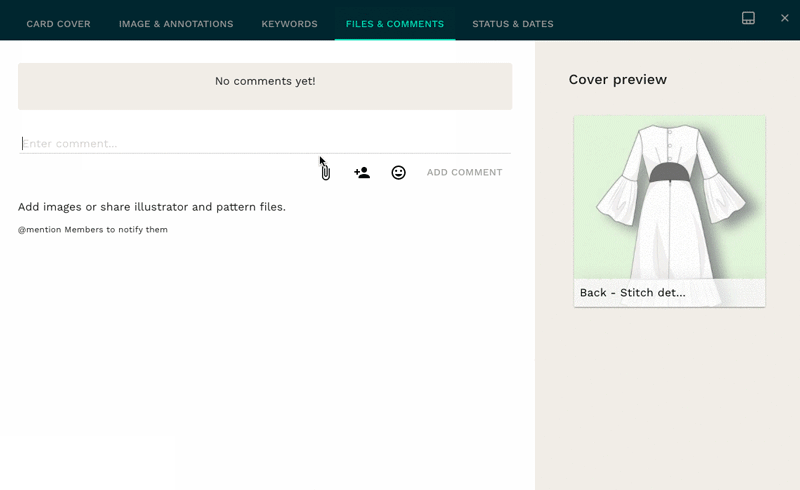
Real-time communication supports transparency and accountability by documenting all discussions and decisions, preventing misunderstandings. This instant feedback loop ensures timely decision-making, avoiding bottlenecks and keeping projects on schedule.
Traditional communication methods can lead to slow feedback loops and miscommunication. Integrated tools facilitate immediate dialogue, allowing team members to discuss details, share insights, and resolve issues within the platform. Direct commenting on design specs, material choices, or production instructions streamlines the workflow and enhances productivity.
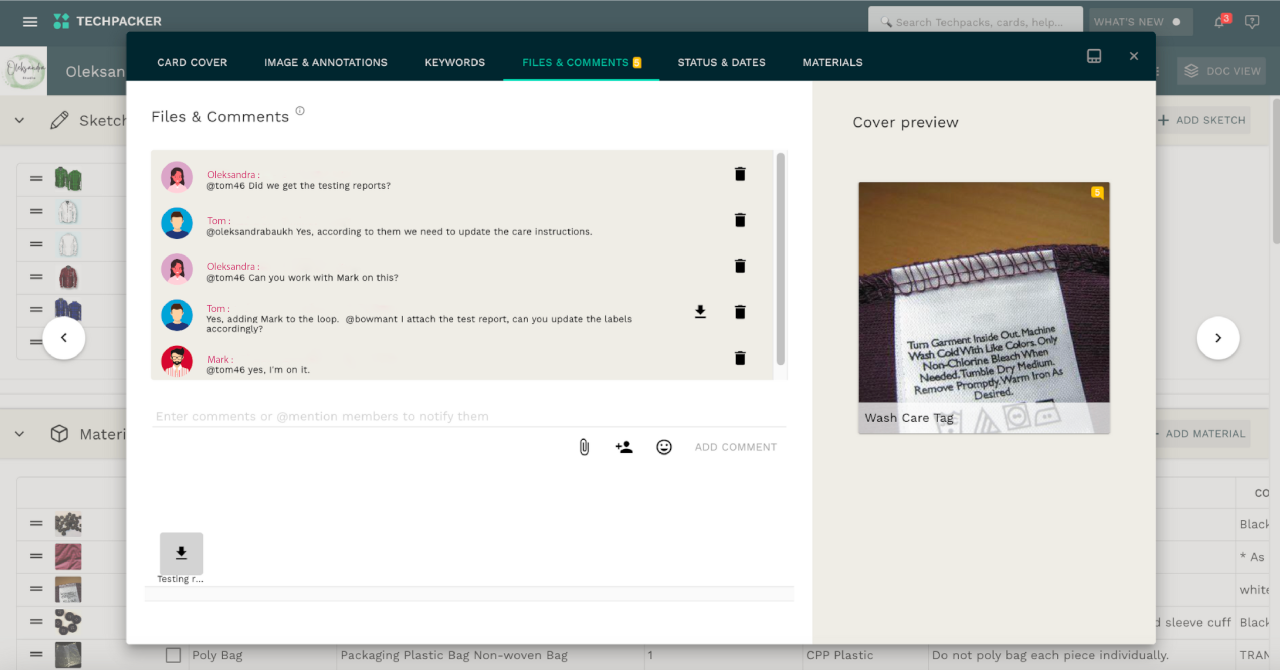
With built-in communication tools, stakeholders can provide instant feedback and make necessary changes on the fly, reducing delays and improving the design and production process's overall efficiency. These tools enable real-time collaboration, ensuring all team members are aligned and can address issues promptly.
Integration with Other Tools
Modern tech packs seamlessly integrate with various digital tools used in the fashion industry, such as CAD software, inventory management systems, and supply chain platforms.
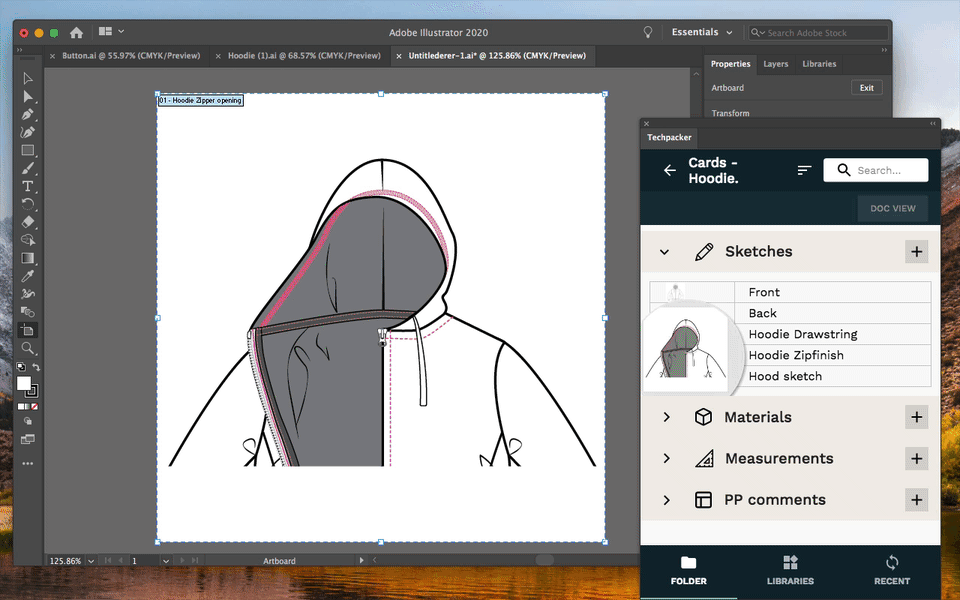
This enhances workflow efficiency and connectivity by enabling easy transfer of design specifications, real-time inventory tracking, and streamlined collaboration with external partners. These integrations optimize processes, reduce errors, and accelerate time-to-market, ultimately enhancing competitiveness in the fast-paced fashion industry.
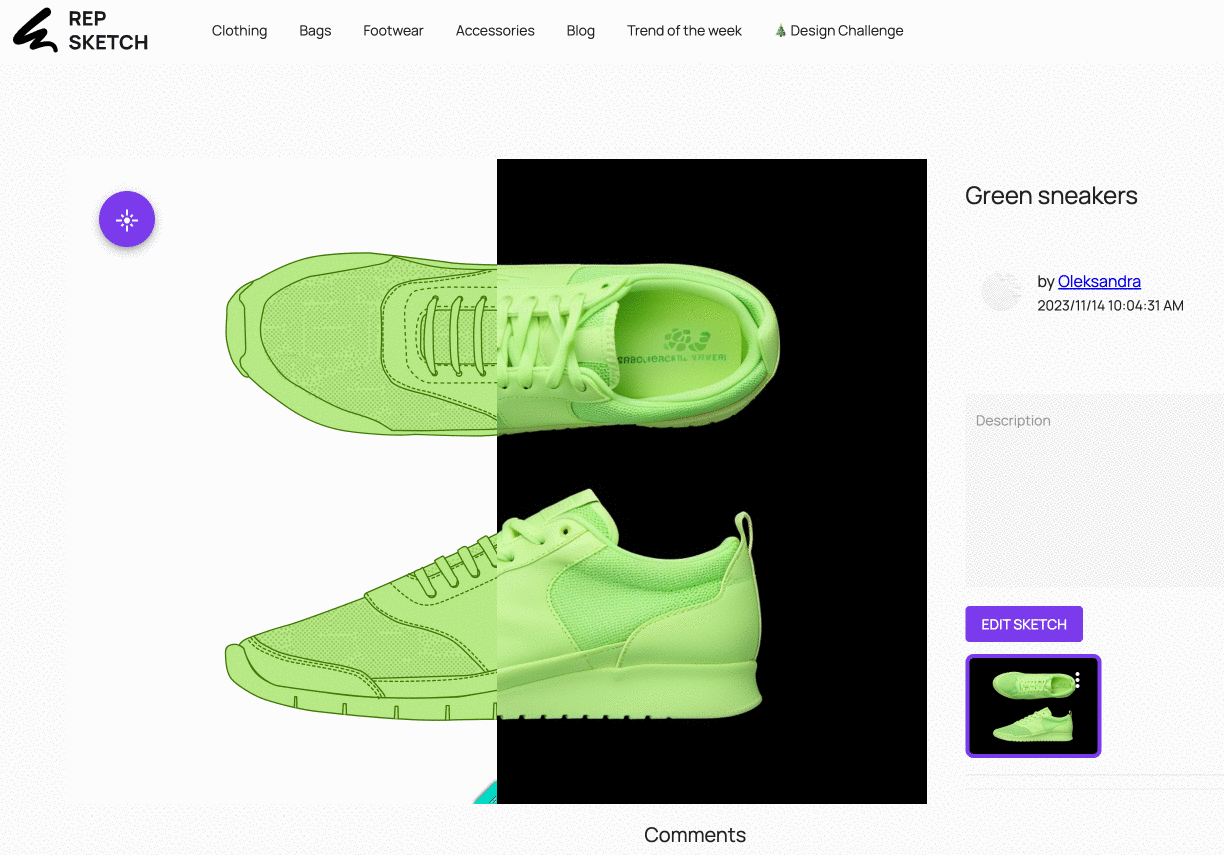
Summary
By adopting these agile, interactive tech packs, fashion brands can streamline their processes, reduce errors, and stay competitive in a rapidly evolving market. The transition from static PDFs to dynamic, collaborative platforms represents a significant step forward in the way fashion ideas are communicated and executed.


